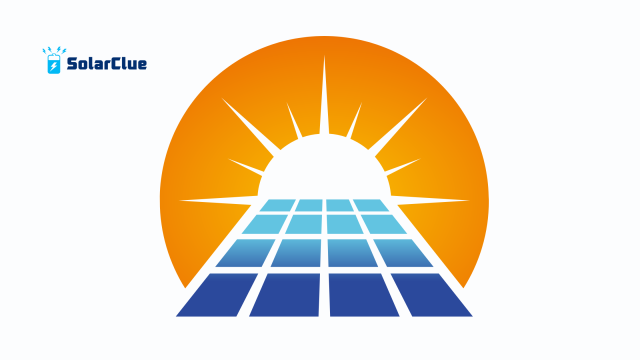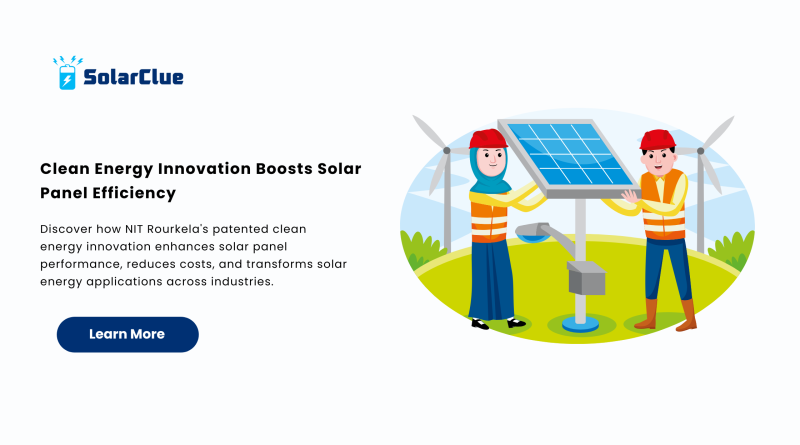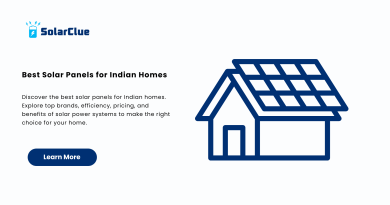Clean Energy Innovation Boosts Solar Panel Efficiency
Clean Energy Innovation Boosts Solar Panel Efficiency: The push for clean energy has reached a new milestone with a breakthrough from the National Institute of Technology (NIT) Rourkela. Researchers have developed a patented clean energy innovation that significantly enhances the way solar panels harness solar energy, especially under changing weather conditions. This advancement not only boosts solar power system performance but also makes renewable energy more accessible and affordable.
Table of Contents
A New Era in Solar Power Harvesting
The Challenge with Traditional Solar Panels
Traditional solar power systems rely on a technique known as Maximum Power Point Tracking (MPPT) to ensure optimal energy capture. However, these systems often use expensive current sensors and struggle to adapt efficiently to rapid changes in sunlight and temperature.
NIT Rourkela’s Breakthrough
NIT Rourkela’s research team, led by Prof. Susovon Samanta, introduced a new voltage sensor-based MPPT method. Unlike conventional systems, it eliminates the need for costly current sensors, reducing overall system complexity and making solar panel technology more cost-effective.
How the Innovation Works
The Role of Voltage Sensors
The innovation uses a simple voltage sensor or resistor divider circuit to identify the Maximum Power Point (MPP) accurately. This approach ensures stable and efficient steady-state operation, responding quickly to environmental changes and reducing power loss.
Enhanced System Performance
This clean energy solution addresses the problem of minor power fluctuations common in traditional systems, ensuring smooth and consistent solar energy extraction, even during varying weather conditions.
Wide-Ranging Applications

Empowering IoT Devices
The innovation is ideal for solar-powered IoT applications such as weather sensors and remote monitoring devices. These systems require stable power supply and benefit immensely from reduced hardware costs.
Enabling Affordable Home Solutions
For residential users, especially in cost-sensitive markets, the technology enhances home solar systems, improving efficiency while minimizing expenses, making renewable energy adoption more practical.
Supporting Remote and Off-Grid Areas
In rural and off-grid communities, where power infrastructure is limited, this innovation ensures a reliable solar power system. It enables stable energy access for lighting, communication, and healthcare needs.
Benefits of the Innovation
Cost Reduction
By removing the need for current sensors, the technology cuts down hardware expenses, lowering the entry barrier for solar installations.
Simplified Design
The system’s architecture is straightforward, which makes it easier to implement and maintain, especially in developing regions.
Scalable Integration
Its design allows it to be incorporated into a wide range of solar power applications, from portable solar chargers to industrial-grade solar farms.
Industry and Environmental Impact
This development represents a leap forward in the global transition to clean energy. It not only supports India’s renewable energy goals but also sets a benchmark for other countries aiming to achieve carbon neutrality.
Aligning with Global Goals
The innovation complements international initiatives like the UN’s Sustainable Development Goals (SDGs), particularly SDG 7, which aims to ensure access to affordable, reliable, and sustainable energy.
Encouraging Investment
Lower costs and improved efficiency can attract investments in solar energy technologies, further accelerating innovation and adoption in the renewable energy sector.
Conclusion
Clean Energy Innovation Boosts Solar Panel Efficiency: NIT Rourkela’s clean energy innovation is more than just a technological advancement—it’s a game-changer for how the world captures and uses solar power. By enhancing solar panel efficiency, reducing costs, and enabling broader applications, this patented method paves the way for a brighter, more sustainable future. Whether it’s powering remote villages or enhancing smart city infrastructure, the impact is both profound and far-reaching.
Want to explore more about how this innovation is reshaping the future of solar energy? Dive into our insights and products at SolarClue. For deeper reads and industry updates, visit our blog today!
FAQs
1. What is Maximum Power Point Tracking (MPPT)?
MPPT is a technique used in solar power systems to ensure they extract the maximum possible power from solar panels, adjusting to changing light and temperature conditions.
2. How does the voltage sensor method improve solar panel efficiency?
By using voltage sensors instead of current sensors, the system simplifies its design, reduces cost, and enhances responsiveness to environmental changes.
3. Can this innovation be used in home solar systems?
Yes, the innovation is ideal for affordable solar power solutions in homes, offering better performance and reduced costs.
4. Is this clean energy innovation patented?
Yes, NIT Rourkela’s technology has been granted a patent, affirming its originality and potential impact.
5. Where can I learn more about solar energy solutions?
Visit SolarClue for a variety of products and blog.solarclue.com for expert articles on solar energy and renewable energy trends.




